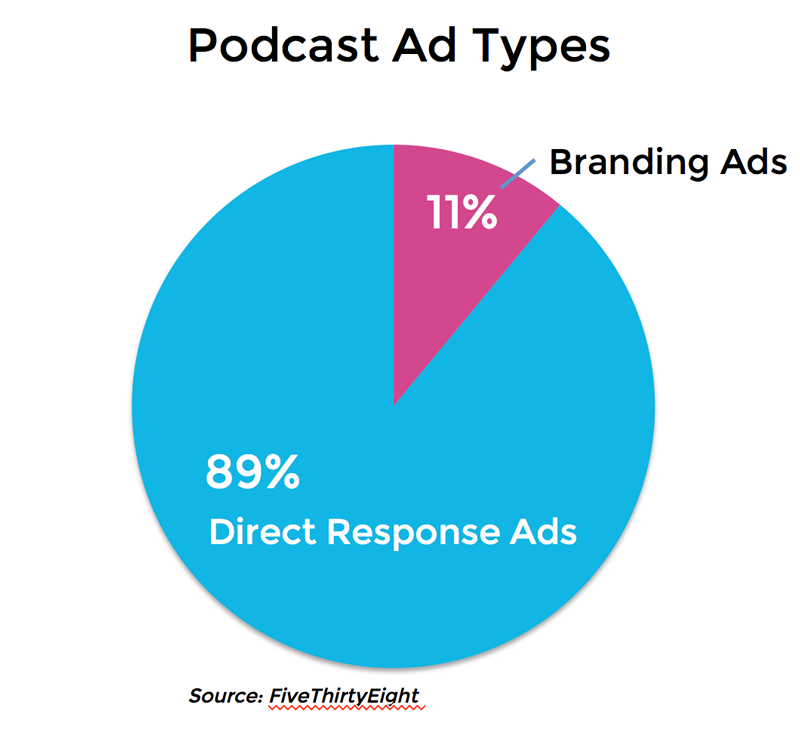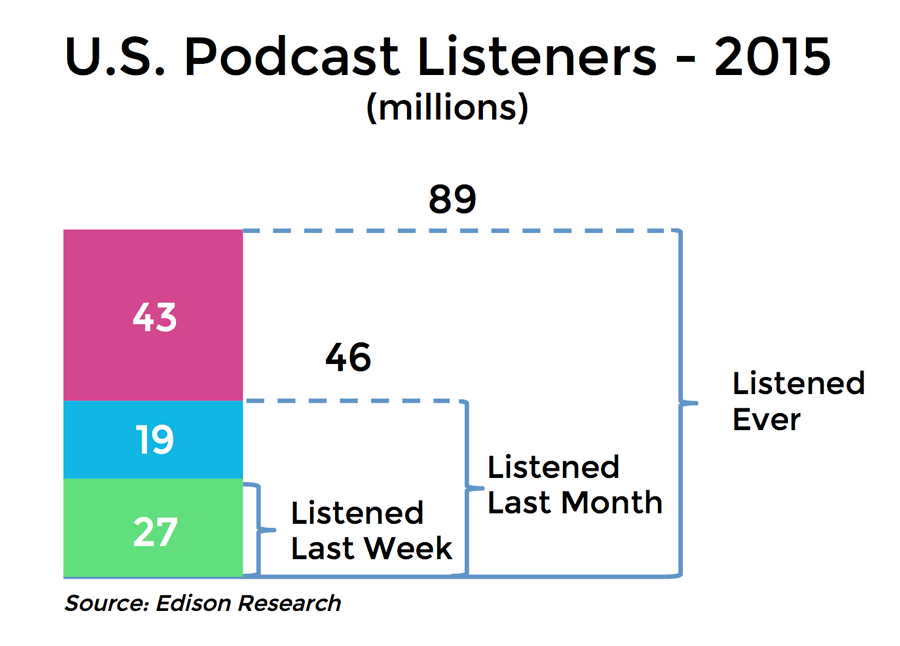Tomorrow, podcasters and media buyers will congregate in New York City for the Podcast Upfront Showcase 2015. Sponsored by the Interactive Advertising Bureau (IAB), this will be an opportunity for media buyers to gain exposure to a wide variety of podcasts in a single sitting and in a format they are familiar with from television media buying. For podcasters, it is an opportunity to gain broad exposure to agencies representing big brands with large advertising budgets.

Podcasting is All about Advertising
The introduction of an Upfront event highlights some differences between podcasts and online music services. One difference is that we don’t see an industry conversation about subscriptions as a way to financially support the content creators. From the beginning, podcasts have been comfortable with the ad-supported model. “Live reads” of ad copy from podcast hosts that have the feel of testimonials come directly from the well-established, talk radio format.
Creators need broad exposure. This is true of music, but many podcasters don’t have an option to build audience on radio as an alternative to online. Free, ad-supported media channels are the fastest way to reach a large audience with minimal friction. Monetization by default falls to advertising.
 Another difference is that podcasts have historically drawn direct response advertisers. An analysis by the FiveThirtyEight in conjunction with Marketplace concluded that 89% of ads in its sample of 186 podcast ads were direct response, as opposed to branding ads. These ads are designed to drive immediate consumer action. While direct response advertising is common on broadcast radio, data from the Internet Radio Ad Load Reports show that most of the ads found in Internet radio music services today are branding in nature. They are designed more for awareness than immediate consumer response.
Another difference is that podcasts have historically drawn direct response advertisers. An analysis by the FiveThirtyEight in conjunction with Marketplace concluded that 89% of ads in its sample of 186 podcast ads were direct response, as opposed to branding ads. These ads are designed to drive immediate consumer action. While direct response advertising is common on broadcast radio, data from the Internet Radio Ad Load Reports show that most of the ads found in Internet radio music services today are branding in nature. They are designed more for awareness than immediate consumer response.
Upfront events typically target national brand advertisers and their agency representatives. These advertisers have large budgets and freeing up a small portion would make a big impact on a market that ZenithOptimedia estimated in 2014 took in only $34 million. While direct response advertisers may continue to be the economic engine for podcasters, the Upfront is a deliberate attempt to diversify the revenue base.
An Attractive Consumer Segment
Brand advertisers may well be enticed by the attractive podcast audience segment. Edison Research reported in March that 89 million Americans over the age of 12 had listened to at least one podcast, a 10% rise from the 2014 survey. Of that total, 46 million had listened to a podcast in the past month and 27 million in the past week.
 Podcasting audiences also have higher incomes and more education than the general population. Edison also reported that 36% of listeners have household incomes above $75,000 compared to 25% of the total population. And, 51% of listeners have at least a 4-year college degree. That compares to about 29% of the 18+ population or about 32% of the 25+ population according to Census Bureau data.
Podcasting audiences also have higher incomes and more education than the general population. Edison also reported that 36% of listeners have household incomes above $75,000 compared to 25% of the total population. And, 51% of listeners have at least a 4-year college degree. That compares to about 29% of the 18+ population or about 32% of the 25+ population according to Census Bureau data.
Podcast network Midroll claims that 67% of its audience in a 279,000 person survey is in the coveted 18-34 age demographic and 20% live in households with over $100,000 in annual income. A large and growing audience combined with favorable demographics suggests there are many reasons why brand advertisers would desire a podcast presence. The Upfront may be just the vehicle to get them engaged.
Podcasting is Mobile Media
 Similar to the rapid shift of online music listening to mobile, podcasts also claim large mobile audiences. Midroll data shows that 96% of its podcast audience use mobile devices for at least some of their listening. Edison data reinforces this conclusion showing that 64% report using mobile devices “most often” for their listening.
Similar to the rapid shift of online music listening to mobile, podcasts also claim large mobile audiences. Midroll data shows that 96% of its podcast audience use mobile devices for at least some of their listening. Edison data reinforces this conclusion showing that 64% report using mobile devices “most often” for their listening.
XAPPmedia pointed out recently that audio is the quintessential mobile media and podcasting fits the definition. This is supported by another Edison finding that 58% of podcast users have connected their smartphone to a car audio system to listen while driving. A Nielsen / CMO Council study found that 70% of marketing executives planned to increase their mobile advertising in 2015. This data point further reinforces the thesis that brand advertising objectives and the podcast value proposition are aligned.
Three Predictions for Podcast Advertising
The arrival of brand advertising will likely accelerate changes in the podcast industry. Three to look out for include:
- An increase in ad insertion: FiveThirtyEight found only one traditional 30-second ad out of the 189 in its research. Brands will, no doubt, like the “live read” model but will also look to gain efficiency and control by requesting slots for produced ads. Ad insertion will enable podcast networks to more efficiently meet advertiser campaign demands for confirmed delivery. It will also create new ad inventory, enabling new ads to be inserted into podcasts that have run in earlier periods.
- More ad syndication to ensure adequate impressions: Even popular podcasts have small audiences by brand advertiser standards. In order to meet campaign objectives for total impressions delivered within a specific time frame, the syndicated podcast networks will be critical to aggregate audiences across multiple podcasts. It will be hard for independent podcasters to meet these core needs of brand advertisers.
- Podcasts will be segmented into formats: We need a new nomenclature for podcasts because they vary significantly. Some are long form topic-driven and have long shelf lives ranging from months to years. Examples include “Hardcore History” and “This American Life.” Others are personality-driven and have current events references that often limit their relevant listening windows to a few weeks. A final category is news-driven podcasts that are perishable within a few days. Sports and politics are good examples of this format. Whether this is the right model or not, it is clear that the current practice of treating podcasts simply by genre can be improved by refined categorization that will help brand advertisers engage with the medium.
The Upfront Podcast Showcase and the podcast upfront held by public radio earlier this year are examples of how the medium is maturing. Internet audio is drawing a lot of attention from advertisers this year because of its substantial reach and favorable demographics. Like music streaming services, podcasts are starting to gain recognition as a valuable channel for reaching mobile consumers.
Related Posts
Why Audio is the Quintessential Mobile Media
Creating a Great Content Interaction Experience on Mobile
4 Charts Show Radio’s Future is on Mobile
